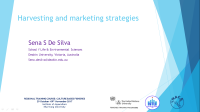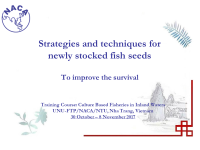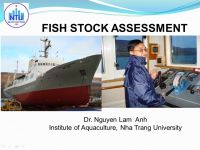Organizers of the 8th International Symposium on Aquatic Animal Health have opened registrations and called for abstract submissions for oral and poster presentations. The 2018 symposium marks the thirtieth anniversary of the ISAAH, which will be held September 2 – 6, 2018 in Prince Edward Island, Canada. Early Bird registration rates are available now, and, as there are limited spaces for registered delegates to attend the pre-conference scientific workshops, organizers encourage participants to sign up as soon as possible.
This collection contains video recordings of the lectures from the Regional Training Course on Culture-based Fisheries in Inland Waters, held at Nha Trang University, Vietnam. The objective of the course was to provide participants with the skills to assist local communities to plan and manage culture-based fisheries; a relatively simple and low cost technology that can deliver nutritional and economic benefits to rural communities with few livelihood options. The course was sponsored by the United Nations University Fisheries Training Programme.



